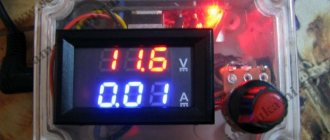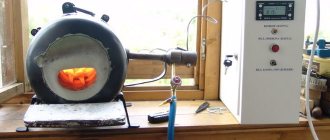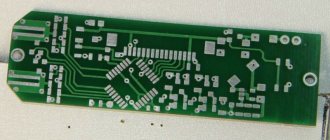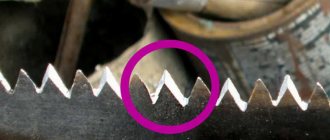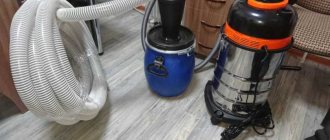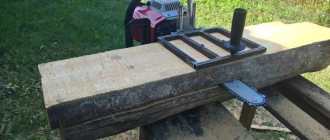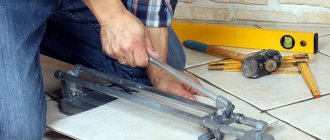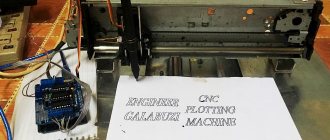In this review we will talk about how to properly install a rivet nut. But first, let's figure out what they are and what they are needed for.
Also, probably, many of you will be interested in learning how to choose the right rivet nut for specific types of work. Well, let's talk about everything in order.
A rivet nut is a type of fastener that is designed for installation in products made of thin sheet metal in order to form a threaded connection in them.
It is impossible to cut a thread in a thin plate with a regular tap, so a rivet nut is an ideal solution for workpieces and products made of thin sheet metals
Rivet nuts differ in their shape. They come in cylindrical, hexagonal or half-hexagonal shapes, cylindrical with grooves and even rubber.
Features of installation of a rivet-nut
In order to install a rivet nut into a metal plate, a hole must be made in the workpiece itself.
Depending on the type of rivet nut, the hole may be different. For example, for a regular cylindrical rivet, a cylindrical hole is suitable.
For a hex rivet, you need to make a hex hole. However, such a hole can only be made with a special tool or on a laser machine.
Therefore, hex rivets are usually used in industries where it is possible to make a hexagonal hole in parts and workpieces.
A hole of exactly this shape is necessary so that the rivet is maximally protected from turning in the material.
A very important point is the choice of drill in order to make the correct diameter of the hole for the rivet nut.
Each rivet has a certain outer diameter, and the drill must be 0.1 mm larger than this diameter.
You can also check the manufacturer’s catalog to be sure, because this indicator can sometimes differ slightly.
Installing buttons and rivets without a press
If you are smart, you can do without a press and special tools. To install the button, you will need a hammer, a bat (bolt) or even a simple needle and thread. It all depends on the type of fittings.
Sew on buttons
Does not require the use of special tools. The easiest way to attach sew-on snaps to clothing is. All you need is a sewing needle, thread to match the fabric and the buttons themselves. The more holes they have, the better.
Instructions:
- Place the metal piece with the bolt on the smooth side against the face of the bottom of the product. Sew on.
- Place the metal part with the recess on the wrong side of the top of the product. Use a needle and thread.
Make sure that the 2 parts of the button are located opposite each other, and the fabric does not form wrinkles. If in doubt, install the bottom part with the bolt first, coat the protruding part with chalk and stamp on the opposite side.
Ring
Perhaps the most common type of button. They are used in tailoring clothes, including jackets, as well as in the manufacture of wallets and bags. They come in different sizes and colors and are mostly made of metal.
The ring button consists of 4 parts and looks like this:
It is connected by inserting a small ring into a large one. Hence the name.
How to install a ring button without a press?
- From the inside of the bottom of the fabric, insert a metal piece with a leg (more inconspicuous in appearance).
- Place a wooden block or something hard under it.
- Cover with a piece with a narrow ring.
- Armed with a bat and hammer, carefully flatten the protruding leg. You can use a suitable size bolt.
- Take the remaining part with the leg (it is usually prettier and better built) and insert it from the front side of the top of the product.
- From the wrong side, place the part with the ring on the leg. Place it on the beam and flare it again. Ready!
In a similar way, you can install plastic ring buttons without special pliers. Only instead of flattening the legs, they should be melted. At home, a soldering iron or a hot nail is used for this.
Alpha buttons
No less popular buttons. They have a spring mechanism and a convex pin. You can see the difference between the ring (2) and “alpha” buttons (1) in the photo:
Inserting them into a jacket or other product with your own hands is more difficult. The reason for this is the pin, which can become wrinkled when flared. To prevent this from happening, you should drill a recess in a wooden block for the convex part of the button.
We recommend: How can you quickly dry clothes after washing?
What to do next:
- Install the part onto the bottom of the product. To do this, take a simple rivet with a leg and thread it from the inside out. Attach the part with the bolt on the front side. Turn it over and place the convex side into the hole drilled in the block. Tap lightly with a hammer on the top (from the inside).
- Next you need to assemble the front part of the button. Insert the rivet with the leg into the hole. Install the part with the recess from the inside out. Armed with a bat (bolt, blunt nail), flatten the leg from the wrong side.
If you often have to install rivets and buttons, then it is worth purchasing at least a minimum of tools: a washer, a standard size bit and one with a recess for the button bolt. The buttons are placed on the washer with the front side so that they do not wrinkle, and with a special bat you can rivet the product in literally 1 minute.
Rivets
Along with functional buttons, decorative rivets are often used in clothes: figured, with pebbles, spikes. They usually have sharp protrusions on the reverse side.
Inserting them is as easy as shelling pears:
- Pierce the fabric with the teeth.
- Press something hard against the rivet. The fabric should be taut and the rivet should fit snugly against it.
- Fold the teeth from the inside out. The easiest way to do this is with a flat screwdriver.
There are also rivets used to secure fabric stitching. Holnitens are often used in products made from denim and leather. This is what they look like:
Installation of this type of rivets is quite simple. The main thing is that the length of the leg matches the thickness of the fabric.
- Insert the part with the leg into the hole from the wrong side.
- Cover with a cap and place face down on a wooden surface.
- Lightly tap the rivet from the inside out with a hammer.
The buttons are inserted into jeans in the same way. The only difficulty is preserving the front part. To prevent it from being wrinkled or scratched, the rivet is hammered in from the inside out, and a rubber or leather gasket is placed under the front side.
Now you know how to install buttons yourself. Home renovations will save you time and money. If you doubt your abilities, try practicing on an unnecessary piece of fabric. You will succeed!
What types of rivet nuts are there?
The simplest rivet nut is a regular cylindrical rivet with a flat flange. Its peculiarity is that it has relatively little resistance to turning.
In other words, when installed in a material, since it does not have corrugation, such a rivet-nut can easily be rotated inside the hole itself.
In order for the rivet to hold more firmly after installation in the material, it is corrugated.
After installing such a rivet nut, thanks to the corrugation, it resists turning in the material much better.
If you need a rivet nut that will provide maximum resistance to turning in the hole, then choose a hexagonal fastener.
There is also a special neoprene rivet nut, which is a collapsible element.
Conventional steel rivets, unlike neoprene ones, cannot be removed after installation - they are permanent fasteners.
General principle
Buttons are a useful invention. They were first used in France in 1885 for leather goods: shoes, gloves, bags. Today, buttons are inserted into jackets, overalls, children's bodysuits, pockets and even underwear. They securely hold the edges of the fabric and at the same time can be completely invisible.
What you need to know about the buttons:
- "Mom and Dad". This is what people call the upper and lower parts of the button (which can also consist of several parts). The “male” has a protruding pin that fits into the “male” - a metal part with a recess and a beautiful “face”. They are located on opposite sides of the fabric. The “mother” is always installed on the upper part of the product, and the “father” is placed on the bottom. As planned, the pin should fit in and out of the recess.
- If the rivets are not sewn, they consist of several parts. Usually “mother” and “father” have 2 parts each. They are collected during the installation process. There is no need to do this in advance.
- Insert non-sew buttons into the holes. They should be narrow and the fabric should be dense. If there are already holes, but they are torn or frayed, they are strengthened with silicone glue, non-woven fabric or sewn with thread. If there are no holes, use a special punch or awl. As a last resort, you can punch a hole with a thin nail. You can’t cut it with scissors: sooner or later the fabric will come apart and the button will start to fall out.
- The button is assembled after installation on the fabric. The metal parts are inserted into the hole, checking for the correct location, and then pressed tightly against each other. Ideally, a press and special attachments are used to connect parts, which allow you to flare (flatten) the required parts of the button. After flattening, one piece fits tightly onto the other.
We recommend: How to properly fold a jacket in a suitcase?
How to remove a broken button
It happens that during wearing, the installed product breaks along with the clothes: how to remove the button in this case is discussed below:
- First you need to prepare the tools: you will need a straight screwdriver, pliers, an awl, a file and a chisel;
- Before removing the fittings, it is necessary to grind off the head of the rivet with a file;
- Care must be taken during the procedure to prevent damage to fingers and clothing;
- Having dealt with the head, you need to bend the metal teeth and pull out the rod.
Now, knowing all the nuances of installing accessories on clothes - how to install a rivet and how to remove it - you can safely go shopping for a variety of buttons, blocks and eyelets to add beautiful decorative elements to your wardrobe.
Cutting the button using scissors
Rules for removing a button
Which rivet nut to choose
Now let's figure out which rivet to choose for a particular material.
Just as in the case of blind rivets, for different types of material it is necessary to select rivet nuts from a similar material.
For a steel plate you need to use a steel rivet, for a stainless plate you need to use a stainless steel rivet, for an aluminum plate you need to use an aluminum rivet.
By choosing the right size and material of the rivet nut, you can select the required load on your fastening joints.
Accordingly, in order to select the correct size and material of the rivet nut, you need to know the load on your connection and the fastener that will be installed.
Tools
Using rivets on clothes, you can significantly transform the appearance of the product. Most often, metal fittings are used on jeans, leather jackets and other items made of thick fabric. To install the blocks, you will need the following tools:
- Press for punching holes. A special device made of steel allows you to instantly punch a hole. Before making a hole, the master marks it. Then he brings the textile to a special area under the tool and presses the press. Under the weight of the press, a hole is formed - it is always smooth and small. Workshops often use a large number of attachments for different button diameters;
- Manual punch. This tool looks like an oblong cylinder of small diameter; it is also equipped with attachments. The punch helps to obtain smooth and beautiful holes;
- Hammer. Without a hammer, the punch will not work. When installing buttons on clothes, the master fixes the punch at the site where the future hole will form and hits it with a hammer several times;
- Chalk or soap. These tools are necessary for marking future holes. Usually soap and chalk are used, since the blocks are placed on jeans. If the fabric is painted in a light color, use a fabric marker.
In addition to the listed devices, you need a mini anvil where the punch will work, an awl for making holes and scissors.
Soap or chalk
Press
Manual punch
Hammer
